Author: Bradley S. WILSON Date: 2014-9-23 19:00:07
A spectacular find of sperrylite crystalswas made in 2011 at the BrokenHammer zone near Sudbury, Ontario,Canada. Fine crystals as large as 15 mmwere recovered from surface exposures.
The Broken Hammer zone is a platinumgroup element-copper-nickel deposit,located in the Sudbury region, thatis currently being considered for minedevelopment by Wallbridge Mining CompanyLimited. It’s interesting to note thatin a mining camp as old and as heavilyexplored and mined as Sudbury, an importantnew mineral discovery can stillbe made on the surface today – and thisdiscovery of fine sperrylite crystals certainlyis important from a collector’sstandpoint.
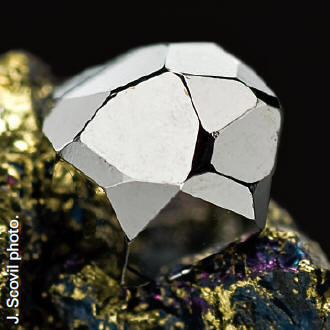
Sperrylite crystal 4 mm high in chalcopyritematrix, from the new find in the BrokenHammer zone, Sudbury, Canada.D. Bunk specimen.
Sperrylite, a platinum arsenide(PtAs2), was first described in 1889by H. L. Wells from crystals collectedat the Vermilion Mine (the type locality),approximately 46 km southwest of theBroken Hammer zone.
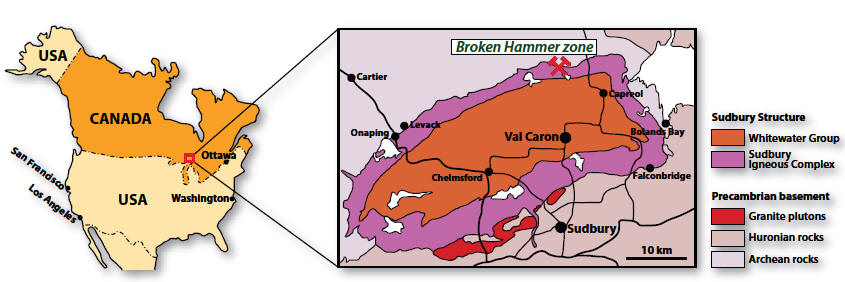
Map of North America outlining the Sudbury region. Map insert shows simplified geology of the Sudbury Structure, the most importanttowns and roads in the area and the location of the Broken Hammer zone (simplified after Péntek et. al. 2008).
GEOLOGY OF THE SUDBURYSTRUCTURE
Sudbury is home to a world-classnickel-copper mining camp where oreexploitation has gone on since 1886. Thedistrict’s by-products include platinumgroup elements (PGE), cobalt, gold, silver,selenium, tellurium, and sulphuricacid. The Creighton Mine, the deepestmine in Sudbury and in the WesternHemisphere, has been active continuouslysince 1901 and has produced more than 155 million tonnes of ore. By 1999,116 metal deposits had been found in theSudbury camp; in 2009 the total of ore alreadyproduced and remaining resouceswas estimated at 1.65 billion tonnes, withan average nickel content of about 1.2%and an average copper content of about1.1%.
The majority of the ore bodies in thearea are related to the 1.85 billion-yearoldSudbury Igneous Complex (SIC) and are classified as magmatic sulphide deposits,further divided into 4 subtypes.
Most of the deposits are located at ornear the base of the Sudbury IgneousComplex.
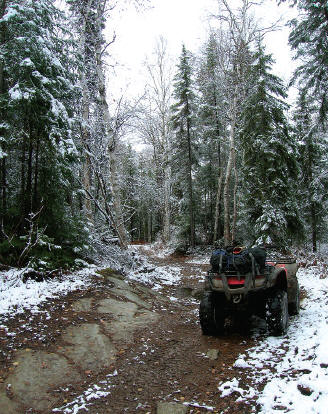
This trail was the only way to reach theBroken Hammer zone in October, 2006.B. Wilson photo.
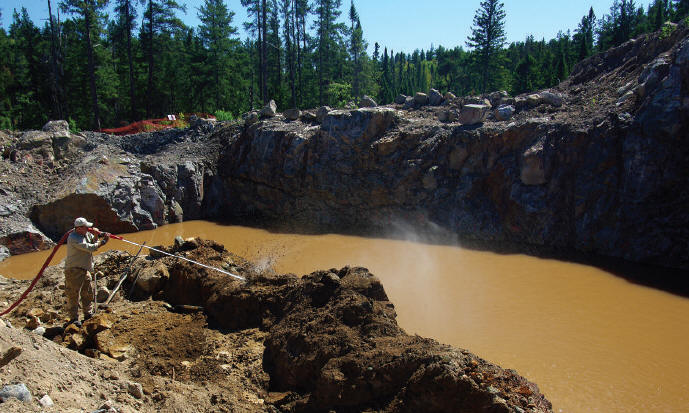
Working in the open pit in the Broken Hammer zone in 2011. B. Wilson photo.
In plan view the SIC consists of anelliptical basin-shaped package of igneousrocks, 58 by 28 km, composed ofcontinuous layers of norite, quartz gabbro,and granophyre, with a discontinuousbasal layer of xenolith-rich quartzdioritic rock called the Sublayer. Above the SIC lies the Sudbury Basin which isoccupied by the Whitewater Group, apackage of sedimentary rocks consistingof heterolithic breccia at its base (OnapingFormation), followed by mudstone,siltstone and wacke. Together the SICand the Sudbury Basin are called theSudbury Structure. Underlying the SudburyStructure and extending beyond itare the footwall rocks: gneissic andgranitic rocks of the Archean SuperiorProvince to the north and granitic andmetasedimentary-volcanic rocks of theProterozoic Southern Province to the south. These footwall rocks also includeseveral types of unusual breccia; one ofthese, the Sudbury Breccia, has been observedas far as 80 km from the SIC.
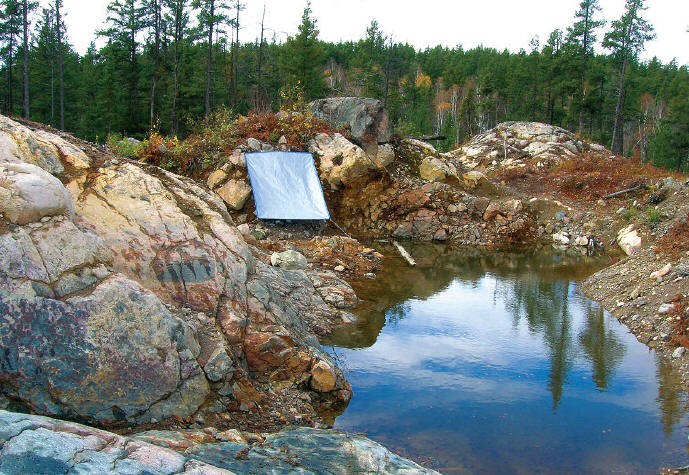
Tarp over collecting area in the Broken Hammer zone in 2006. B. Wilson photo.
The origin of the Sudbury Structureand its metal deposits is generally attributedto a meteorite impact 1.85 billionyears ago. In the impact theory, theSIC is considered to be an impact melt,the Whitewater Group is the lithified remainsof breccias and sediments that infilledthe crater, and the unusual brecciafound in the footwall rocks (SudburyBreccia) is the result of the damage caused to the earth’s crust by this massiveimpact.
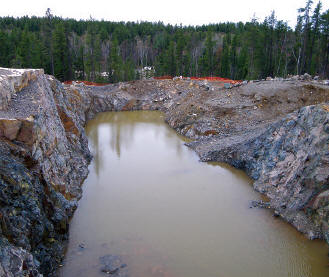
General view at the open pit in the BrokenHammer zone in 2011. Most of thesperrylites come from a small area onthe right side of the pit. B. Wilson photo.
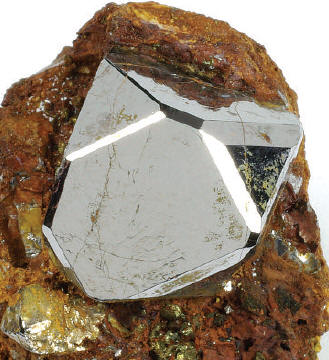
Sperrylite crystal 1.1 cm high. Wallbridge specimen. B. Wilson photo.
Despite the quantity of ore mined inthe past century, well crystallized mineralsof any kind from the Sudbury areaare scarce. Customarily, until very recently,mineral collectors speaking of desirablespecimens from the area wouldmention only sperrylite from its type locality,the Vermilion Mine. In 1971, theRoyal Ontario Museum acquired a specimenwith a 12 mm-wide sperrylite crystalfrom that mine: the largest Canadiansperrylite crystal known at the time. Butthe discovery of larger, still excellentsperrylite crystals from the Broken Hammerzone will change this state of affairs.
Massive chalcopyrite vein, Big Boy vein,exposed during the workings in the BrokenHammer zone. B. Wilson photo.
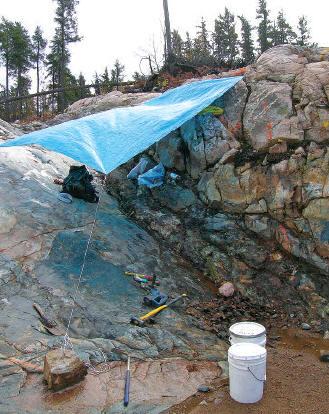
Collecting from the Big Boy vein in 2006. B. Wilson photo.









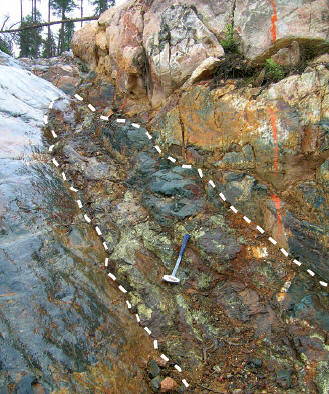

 YueGongAnBei 44051102000467
YueGongAnBei 44051102000467


 |
|